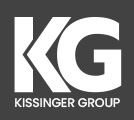The healthcare sector is facing an era of unprecedented disruption. Economic uncertainty, shifting workforce dynamics, strained supply chains, and reductions in research funding are converging to create a perfect storm. For healthcare leaders, this environment demands rapid adaptation, strategic clarity, and a relentless focus on both immediate and long-term resilience.
This article lays out the current challenges—and more importantly, what to do about them with insights from our experts Merrilyn Datta and Tracey Veal.
1. The Ripple Effect of Research Funding Cuts
Recent reductions in research funding are not just a problem for universities and labs—they’re a direct threat to the future of healthcare. Basic research fuels therapeutic breakthroughs, many of which originate from government-funded programs. With projected budget cuts of up to 40–50% for major institutions like the NIH and NSF, the consequences are already being felt.
Action steps for healthcare leaders:
Monitor pending and approved grant changes affecting your clinical partners.
Strengthen partnerships with research institutions to maintain access to innovation pipelines.
Reassess your clinical trial strategy—particularly in underserved communities, where funding cuts may be most acutely felt.
2. A Shifting Healthcare Workforce
Healthcare delivery depends on a highly skilled, often globally sourced workforce. Immigration uncertainty is shaking the foundation. With more than 30% of the sector’s workforce on immigrant visas—particularly in roles like nursing, elder care, and clinical research—policy volatility is already impacting staffing levels.
Additionally, international scientists are being courted by other nations, with some governments investing hundreds of millions into campaigns designed to lure U.S.-based talent abroad.
What you can do:
Conduct a workforce risk assessment: identify critical roles vulnerable to visa or policy changes.
Collaborate with HR to create talent retention plans for international employees.
Explore local training pipelines and partnerships to diversify future talent sources.
3. Supply Chain Vulnerabilities Are a Strategic Threat
Global supply chains, long optimized for efficiency, are showing signs of strain. Tariffs, border controls, and geopolitical tensions have exposed the fragility of sourcing essential medical equipment, pharmaceuticals, and even sterilization materials from abroad.
For nonprofit hospitals and lean health systems, these costs can’t simply be passed on to patients.
Steps to take now:
Map your entire supply chain—know where every essential input comes from.
Build redundancy into your sourcing: explore domestic or regional suppliers.
Collaborate with other organizations for shared purchasing power or joint sourcing agreements.
4. Strategic Agility Is the New Competitive Advantage
In times of uncertainty, traditional long-term planning can become a liability. The most resilient healthcare organizations are scenario-planning: defining “no regrets” actions they can take regardless of how things unfold.
Apply this two-track strategy:
Short-term moves:
Use a “stoplight” framework: Red (must keep), Yellow (consider), Green (cut or pause).
Track key indicators (e.g., policy announcements, inflation metrics, labor data) to adjust quickly.
Long-term strategy:
Reassess your market position. Will your current service mix still be viable in 2–3 years?
Prioritize investments in areas least affected by global uncertainty, such as local partnerships or modular technology platforms.
Use AI-driven scenario tools to support—not replace—strategic decision making.
5. Silver Linings: Innovation Through Constraint
Despite the pressure, moments of crisis often catalyze innovation. Creative purchasing coalitions, cross-border collaborations, and new business models are already emerging. Regions that once competed are now sharing resources. Health systems are finding new efficiencies out of necessity.
Healthcare leaders should tap into this moment—not retreat from it.
Think about:
Partnering beyond your usual circle: think cross-sector, cross-border, even cross-competitor.
Building patient advisory groups to gain insights into what trade-offs are actually acceptable.
Turning workforce changes into a catalyst for redesigning care delivery models.
Final Thought: Act Before the Pressure Mounts
Waiting to see how things shake out isn’t a strategy—it’s a risk. The best leaders will move first, plan smartly, and communicate clearly across their organizations. Whether it’s rethinking clinical trials, shoring up workforce pipelines, or preparing for global shocks, the time to act is now.
This moment isn’t about panic. It’s about preparation.
Interested in downloading our handout with step-by-step instructions on what to do next? Fill out the form for instant access.
